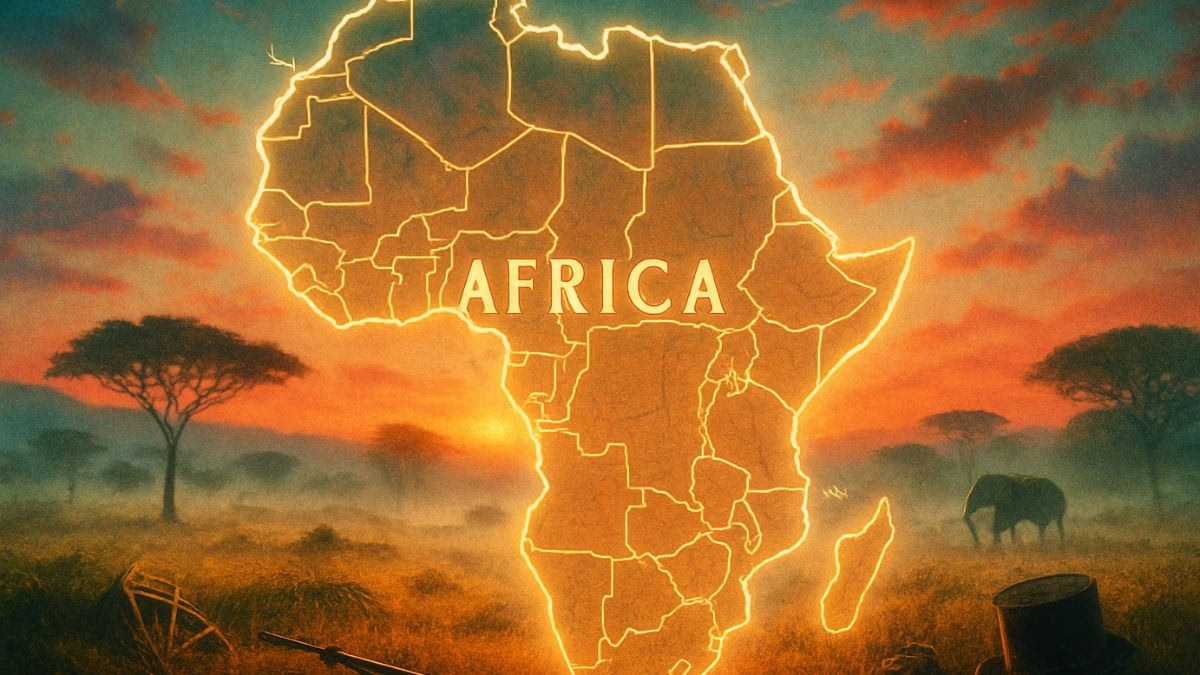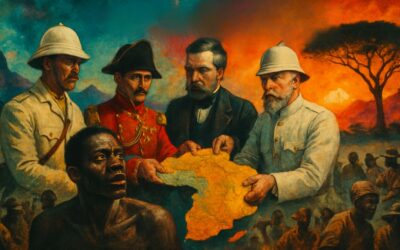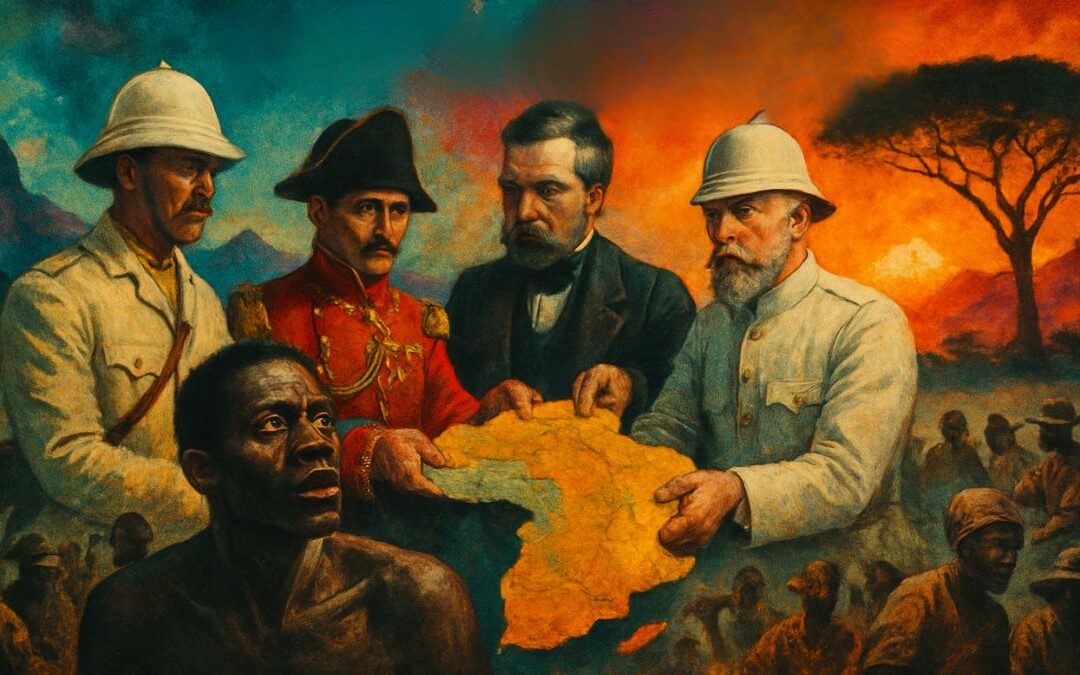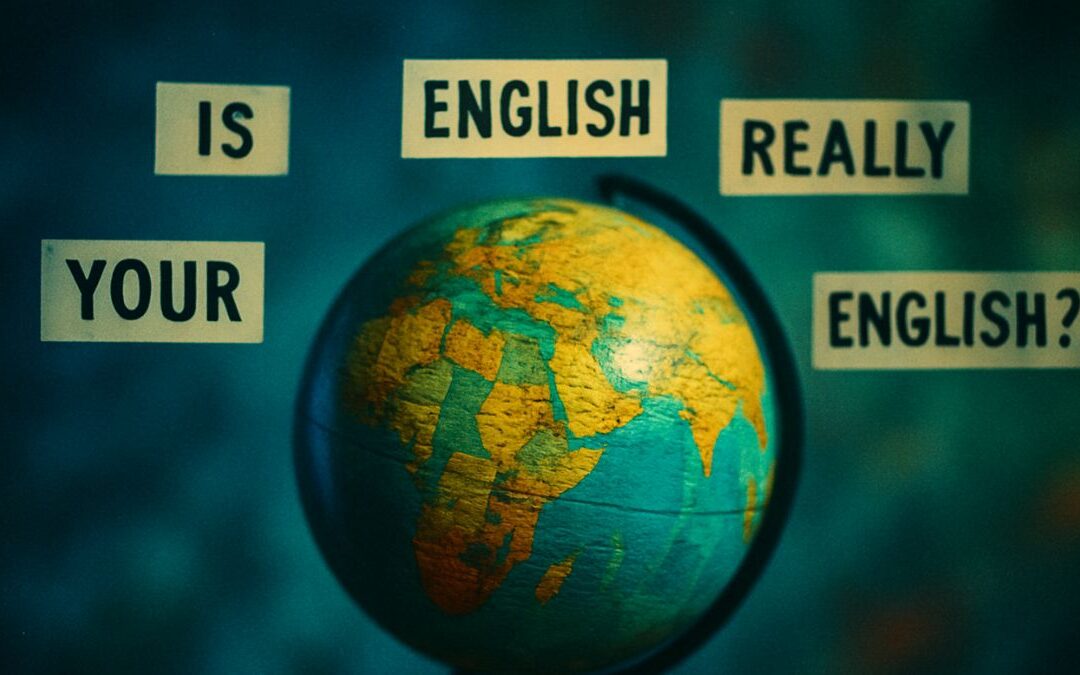Audio Primer
Introduction
Have you ever looked at a map of Africa and wondered why so many of the borders are perfectly straight lines? Those lines aren’t natural; they were drawn.
In 1880, Africa was a vast continent composed of thousands of autonomous societies and powerful kingdoms. By 1914, just 34 years later, it had been carved up like a cake by European powers. This period of rapid, frantic colonization is known as the “Scramble for Africa.”
But how did this happen so fast? And why were these borders drawn in a way that would shape the continent’s future forever? This quiz is more than just a history test; it’s a learning tool to help you understand one of the most significant geopolitical events of the modern era. By exploring the “how” of this partition, you’ll gain a critical insight into the “why” of today’s headlines, from political instability to modern-day borders.
Learning Quiz
This is a learning quiz from English Plus Podcast, in which, you will be able to learn from your mistakes as much as you will learn from the answers you get right because we have added feedback for every single option in the quiz, and to help you choose the right answer if you’re not sure, there are also hints for every single option for every question. So, there’s learning all around this quiz, you can hardly call it quiz anymore! It’s a learning quiz from English Plus Podcast.
Quiz Takeaways | Drawing the Lines of Today
Hello, and welcome. If you’ve just taken that quiz, your head might be spinning. We just covered about 34 years of history that completely remade a continent. The main takeaway, as the quiz title suggests, is that the maps of 1880 and 1914 tell one of the most dramatic stories in human history. It’s not just a story about geography; it’s a story about power, economics, and ideology that still defines our world.
So let’s walk through what we learned.
First, we had to bust a myth. We started by looking at the “before” picture: Africa in 1880. For centuries, a common and racist European narrative was that Africa was a “dark continent,” an empty, savage land waiting to be “discovered.” As we learned, this was a lie used to justify what came next. The reality, as you now know, is that Africa in 1880 was a diverse and complex continent. It had massive, powerful empires like the Sokoto Caliphate in West Africa and the Zulu Kingdom in the south. It had ancient kingdoms, city-states, and thousands of autonomous societies with their own laws, cultures, and trade routes. European control was minimal, barely clinging to the coastlines.
So what changed? Why the sudden “scramble”?
We learned there were three main drivers. The first was economic. The Industrial Revolution was in full swing in Europe. Factories in London, Paris, and Berlin were chewing up raw materials faster than they could be found. Africa was seen as a giant, untapped source of everything: rubber for tires, cotton for textiles, ivory, gold, diamonds, and palm oil. It was also seen as a new, captive market to sell those finished goods.
The second driver, as we saw, was political. In this period, a nation wasn’t “great” unless it had an empire. It was a matter of national prestige. After Germany united in 1871, it wanted to prove it was a major power, so it demanded its “place in the sun.” This kicked off a paranoid rivalry. If Britain claimed a territory, France felt it had to claim the one next to it, just to stop the British from getting it. This led to strategic, almost absurd, land grabs. Britain’s “Cape to Cairo” dream—a plan for an unbroken line of colonies from South Africa to Egypt—was a perfect example of this. It was a grand, strategic game of chess, where Africa was the board.
The third driver was the ideological justification. You can’t just say, “We’re going to steal this land for money and trophies.” So, an idea was created: the “White Man’s Burden.” This was the belief that the “superior” European race had a moral duty to “civilize” the rest of the world. This meant imposing European laws, education, and, crucially, Christianity. It was a justification that painted an act of conquest as an act of charity.
So, with all these powers rushing to grab a piece, the situation got tense. The “Fashoda Incident,” where British and French armies met face-to-face in the desert of Sudan, nearly started a full-blown European war.
This is where the most important event of the quiz comes in: The Berlin Conference of 1884-85.
To prevent a war among themselves, German chancellor Otto von Bismarck invited 14 nations (including the U.S.) to Berlin. And, as we learned, the one group of people not invited was… anyone from Africa. For several months, these European politicians sat around a map and drew lines. They laid down the “rules of the game.”
The most important rule was the “Principle of Effective Occupation.” This was the game-changer. It meant you couldn’t just plant a flag on a coast and claim all the land behind it. You had to prove you controlled it by having administrators, soldiers, or police on the ground. This rule, made in Berlin, is what directly launched the physical, armed invasion of the African interior. It was a “starting gun” for the partition.
This conference is also where King Leopold II of Belgium pulled off one of the greatest cons in history. He convinced the world to give him the entire Congo basin—an area 76 times the size of Belgium—not as a colony, but as his own personal property, which he called the “Congo Free State.” It became a brutal slave state dedicated to harvesting rubber, a dark chapter in its own right.
So the scramble was on. As the 1914 map shows, France took a massive, connected piece of West and North-West Africa. Britain took the most valuable pieces, including Egypt (for the Suez Canal), South Africa (for its gold and diamonds), Nigeria, and Ghana. Germany, Portugal, and Italy grabbed the rest.
But, as we learned, two nations survived. Liberia, founded by freed American slaves, was left alone because of its “special relationship” with the U.S. And then there was Ethiopia. This is the critical story of African resistance. When Italy tried to invade, Emperor Menelik II, who had cleverly modernized his army, met them at the Battle of Adwa in 1896 and won. He crushed the Italian army. It was a victory that echoed around the world and secured Ethiopia’s sovereignty.
Finally, we have to talk about the legacy. Those lines drawn in Berlin? They were arbitrary. They were drawn with a ruler, often on maps that were totally wrong, with no knowledge of the people who lived there. Imagine someone drawing a line right through your town, putting your house in one country and your school in another. Imagine they drew a new line that forced your neighborhood and your rival neighborhood into the same new country, and told you to “get along.”
This is the legacy. The “arbitrary borders” are the single most important consequence of the scramble. They grouped rival ethnic groups together and split allied groups apart. This is the root cause of so many of the civil wars and political instabilities in post-colonial Africa. It also created economies designed for one thing: to export raw materials to Europe.
So, when you look at a map of Africa today, and you see those long, straight lines… you’re not just looking at geography. You’re looking at the leftover scars of the “Scramble for Africa.” You now know how and why those lines were drawn. You’ve gone beyond the map and learned the history.










0 Comments